Adriana Taylor is a recent graduate of Geology at Queen’s University. As a part of the Geological Science undergraduate degree, fourth-year students complete a trip to Quebec to study the dynamic stratigraphy and tectonic evolution of Cambro-Ordovician Eastern North America. The four-day trip is run by structural geologist, Dr. Laurent Godin and carbonate sedimentologist specialist, Dr. Noel James. Adriana Taylor is returning to Queen’s University to pursue her Master of Science Degree.
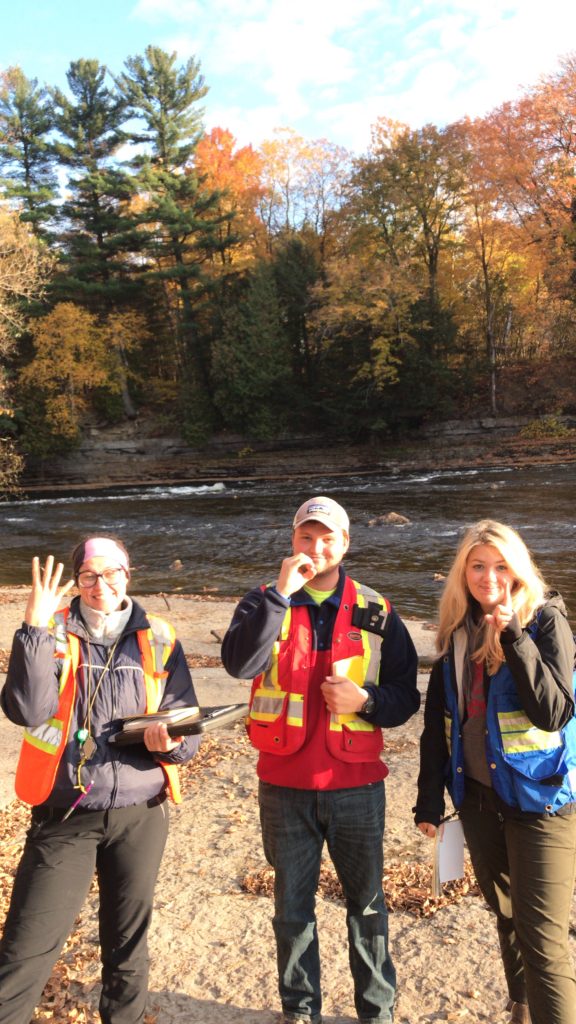
Eastern North America is rich in evidence of the geological formation of the continent with many accessible outcrops specifically in the province of Québec. Highlighted specifically on this trip was the large spectrum of carbonate, volcanic, and siliciclastic environments which paint a sequence of events of a slice of time. Located within the Ottawa Valley and St. Lawrence Lowland are the Cambrian-Ordovician Sauk and Tippecanoe sequences which illustrate deposition of the low-latitude continental margin. By examining varying depositional environments and related fossils, an interpretation of the regional synthesis and paleogeographic reconstruction of the continent can be made.
The rifting of the eastern margin of the paleocontinent Laurentia is reflected in Cambrian and Ordovician sediments. Also observed in these sediments is the flooding of the craton during the formation of the Iapetus Ocean, recording the collison of an island arc with the eastern margin of Laurentia. The result of this collision is a series of thrust slices and the famous Logan’s Line. Logan’s Line, which passes through Québec City marks the boundary between allochthonous and autochthonous terrain and was visited on this trip. Also exposed in the area is a strip of platform sediments as a result of extensive thrusting and basin relief which is exclusive to the area. A new topic for fourth-year students and observed on this trip was mélange and flysch deposits which accumulates as the nappes advanced northwestward.
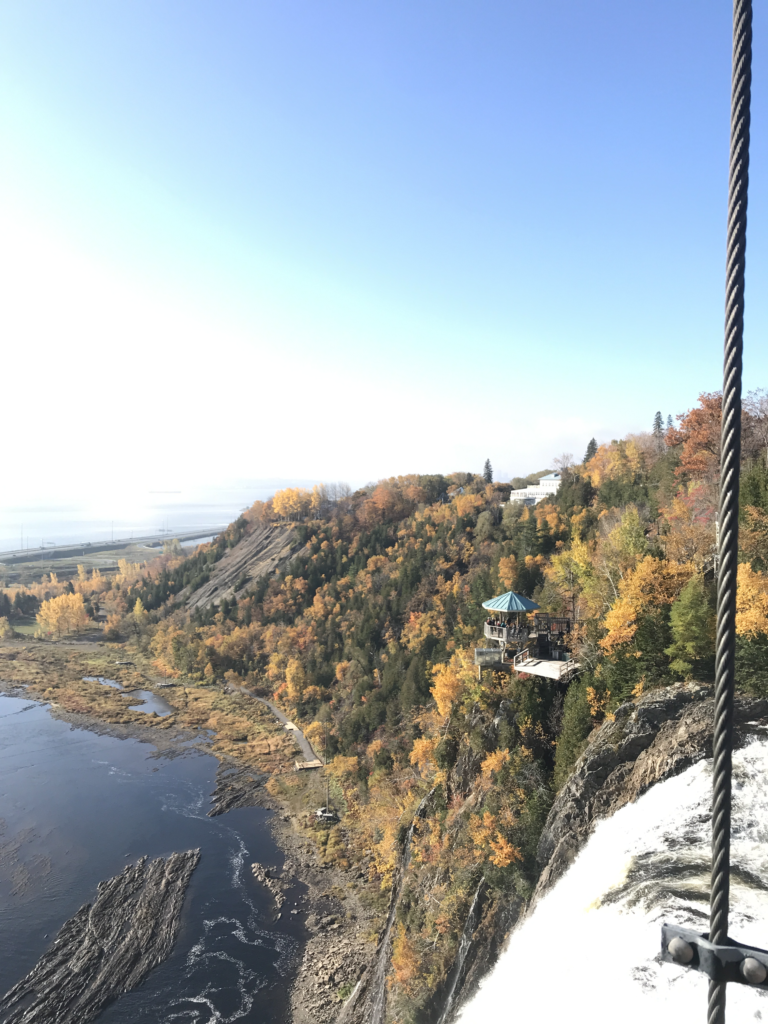
The students embark first in the Ottawa Valley Graben, at Lac Beauchamp Park, Gatineau. The beginning stratigraphic position is in Grenville metamorphic rocks (>1150 Ma age of metamorphism) overlain by sub-Nepean Formation (Potsdam group). At this outcrop, we observed an unconformity representing more than 500 million years. Marking the unconformity is a thin lense of pebble lag at the base of the sandstone which created much confusion among students as to where the actual unconformity was located, although it seemed obvious. Following the planer unconformity, we visited an outcrop of the Beekmantown Group and the Rockcliffe formation of the Chazy Group. Here we were tested on our fossil identification and depositional environment indicators. To finish the first day, we visited the Ouareau River which was glowing from the sunset and colourful fall trees. After a long day of travel and outcrop visits, we were definitely ready to pack it in for the day, but this Middle Ordovician Black River Group outcrop was not one to miss. Here we saw a vast change in depositional environment as we travelled up sequence and observed a classic cratonic carbonate succession.
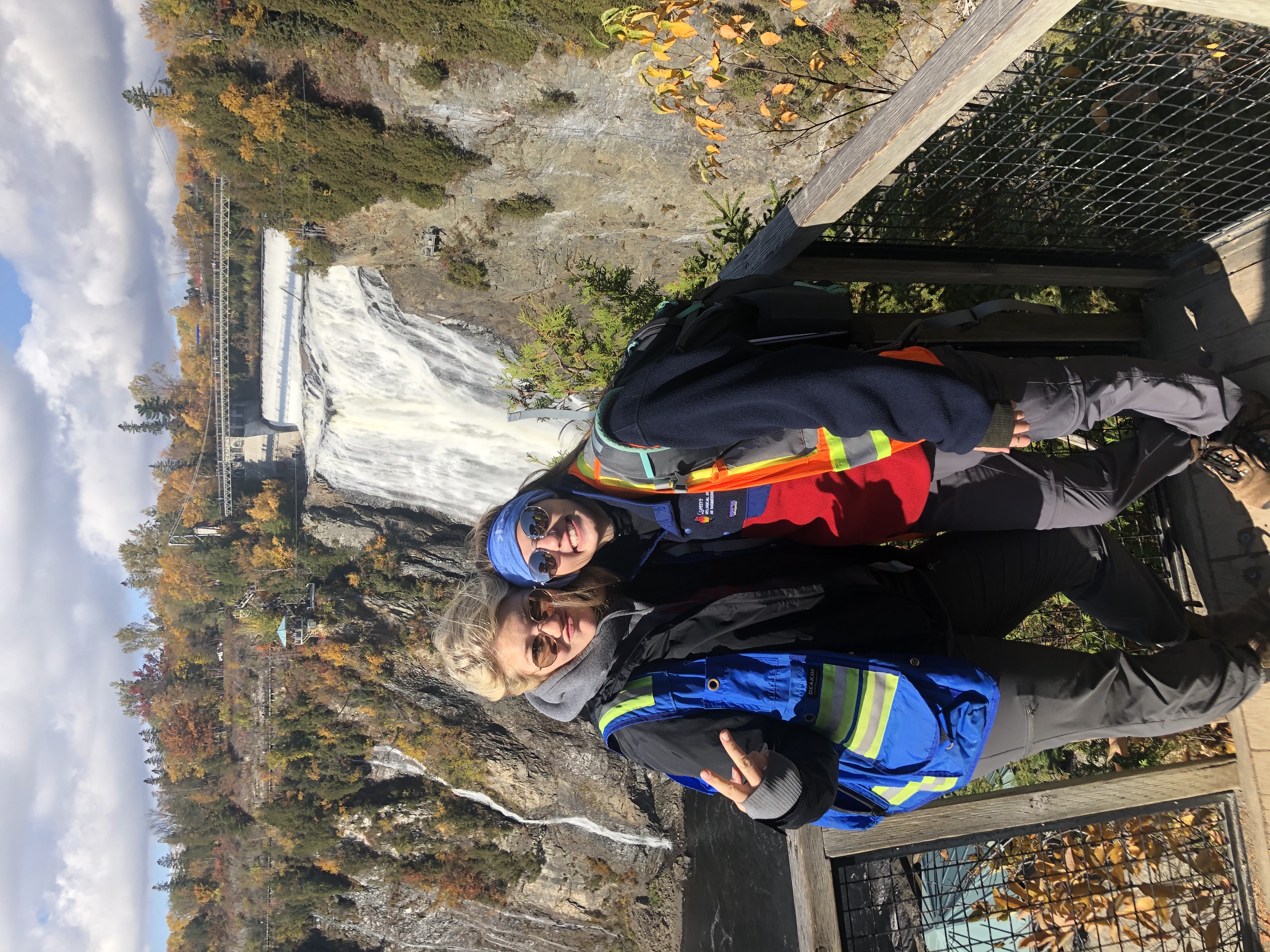
A brief interruption from a lesson for a photoshoot. How could you resist with a backdrop like that? 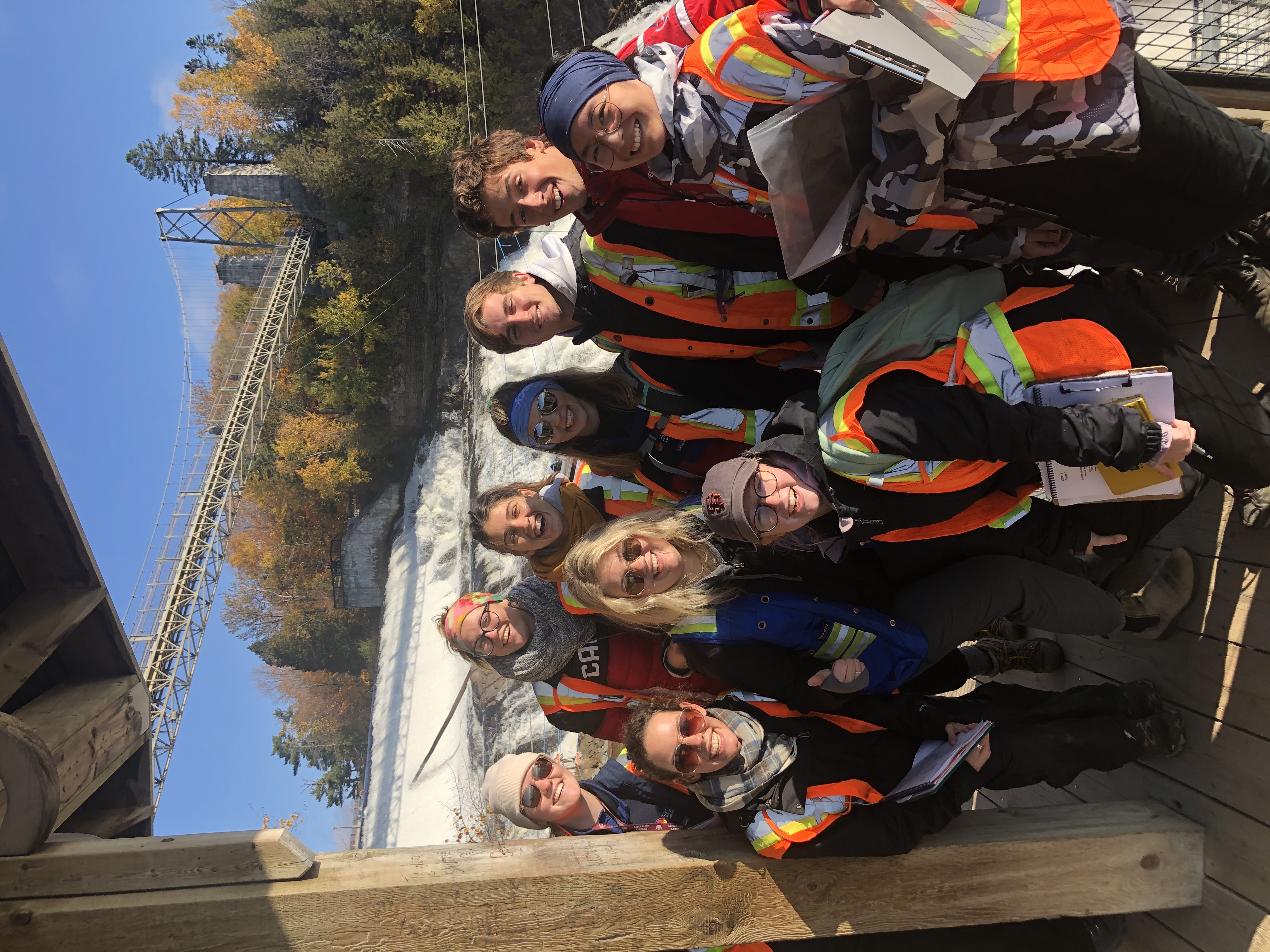
To begin the second day, we travelled to the stunning Montmorency Falls. The entire morning was spent at the falls studying the thrust and block faulting with some brief intermissions for group photo shoots because we could not resist. It was entertaining to see so many visitors appreciating the stunning rock formation for its interesting topography and dark black colour which we know as the famous and very valuable Utica Shale. Next we got up close and in-person with an outcrop of chaotic thrust mélange a part of the lowest and least travelled nappe, the Québec Proximity Nappe. To end our second day, we travelled outside of the city to Le Quai de L’Islet sur mer during a low tide where the most exposure of rock surface could be seen. With our final lesson of the day here we observed a turbidite channel deposit where the channeled base could actually be seen. After this jam-packed day, we were definitely feeling blessed to be able to stand on such rare outcrops that are so close to home.
We began our third day at the Charney falls where we saw shales of many colours with very thin turbidites. The beauty of waterfalls is getting to observe rock exposure from a distance where you can piece together the geology at a larger scale. Throughout the day we travelled eastward across the Montreal Platform and observed a partial to complete Bouma sequence as well as a massive turbidite. The rest of the day was analyzing paleoenvironments from indicators seen in a slop deposit. It is amazing how many years of geologic history you can walk across in only a few steps.
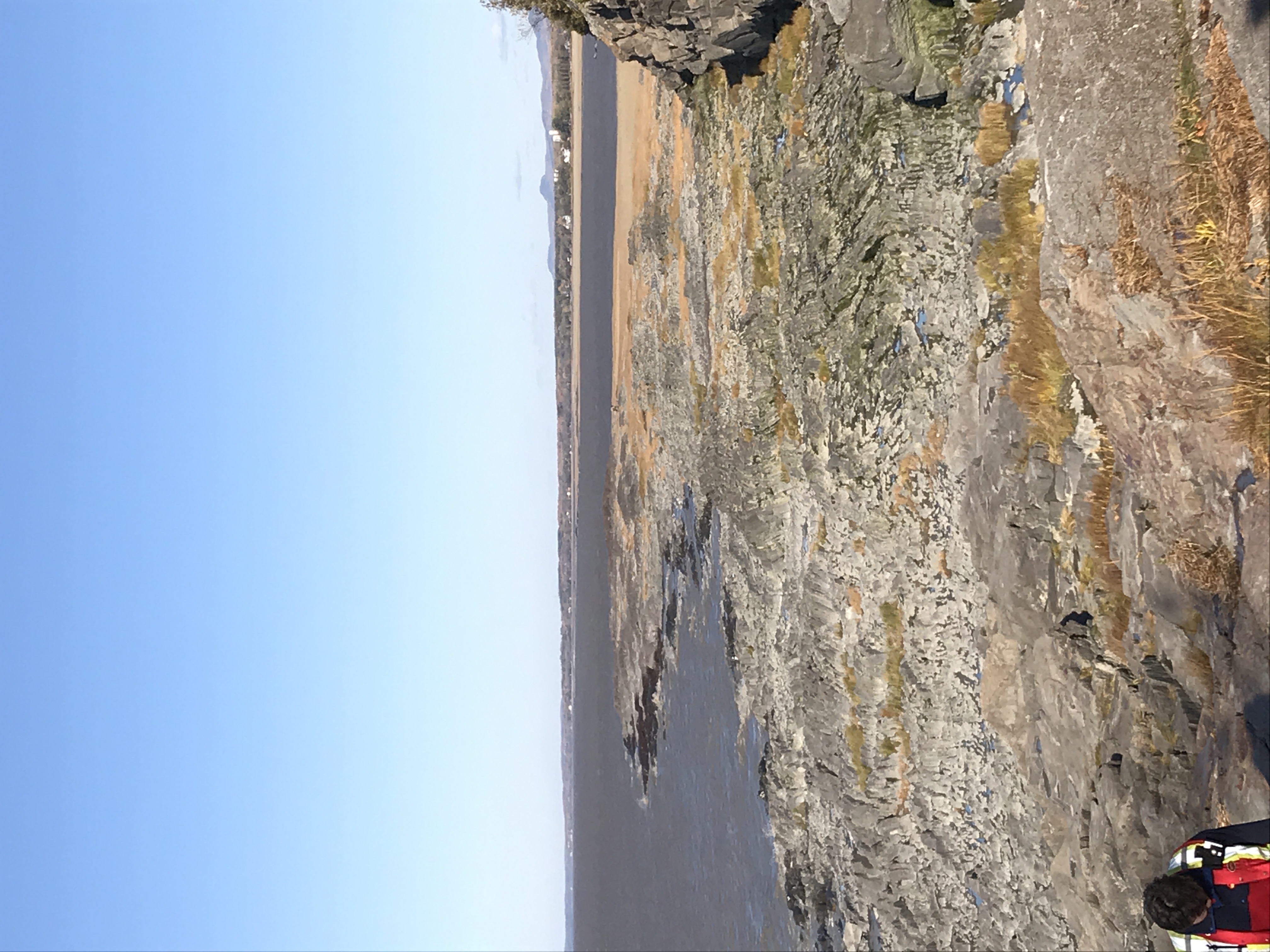
At low tide at Le Quai de L’Islet sur mer, an exposed turbitite channel can be seen 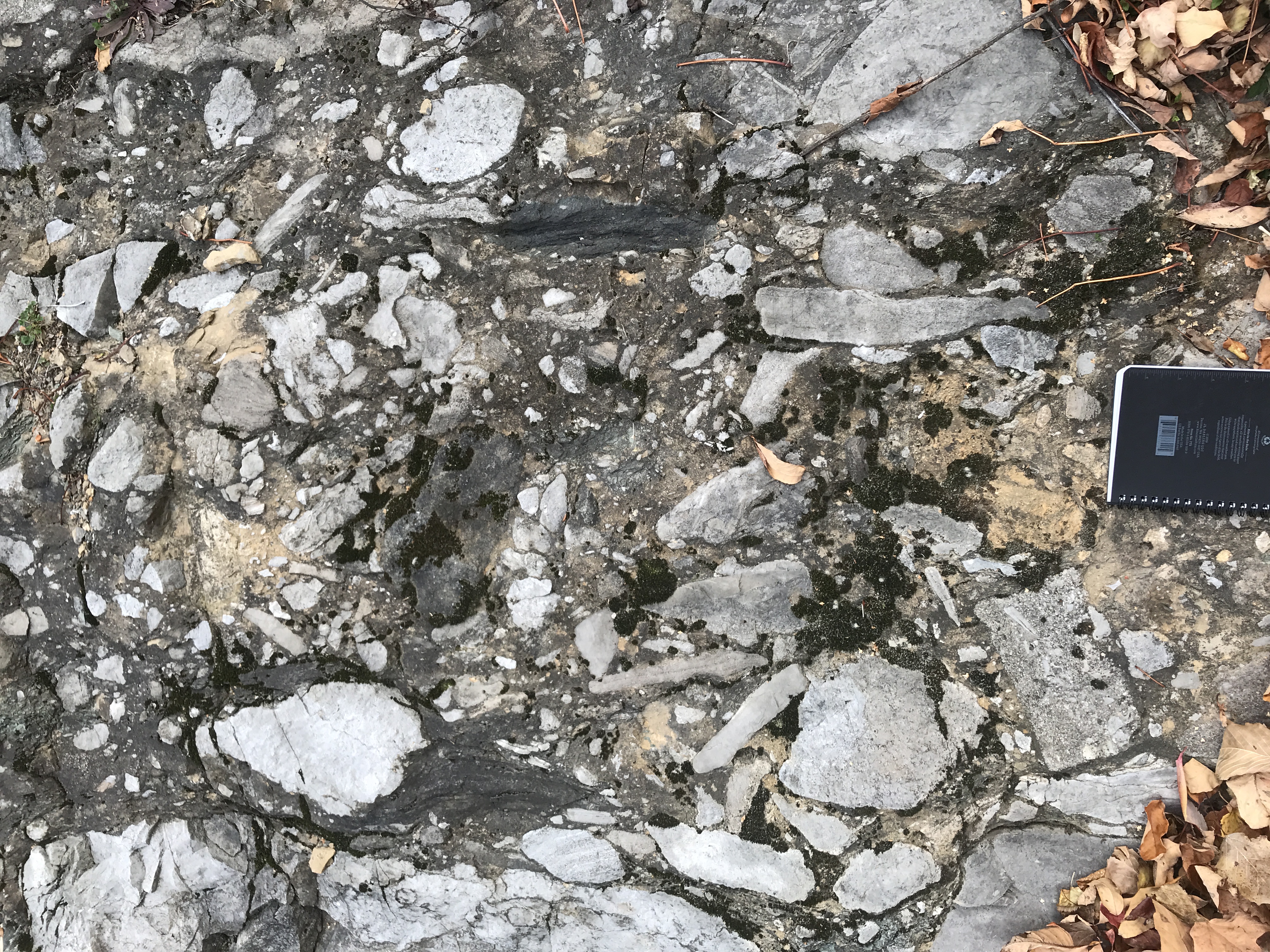
A sample of the variety seen in the massive polymict conglomerate outcrop of the middle Levis Formation
On the next day we travelled to the little mining town of Thetford, Québec. This town was one of the world’s largest asbestos mining and production centers in the 20th century. Our first stop was outside of this little town at a roadcut of the obduction of an ophiolite on the leading edge of Laurentia. This amazing roadcut of a dynamotheral sole shows exposure of serpentinized ultramafic rocks, approximately 20m of ampholyte with a strong foliation defined by the hornblende and epidote crystals and the contact between them. Our next outcrop visited was characterized by many asbestos veins in various orientations. The harzburgite at this outcrop actually represents a preserved early Cambrian oceanic mantle! Despite the pouring rain that day, it’s not every day you can say you got the opportunity to walk on the mantle, so it definitely raised our soaked spirits. As the rain continued and worsened throughout the afternoon, we made a quick stop to view the Thetford mine Lac d’Amiante at Black Lake. At this look -out we could see the open pit mine in operation. The brief lesson taught by Dr. Godin and Dr. James was drowned out by the large mine trucks speeding through the muddy mine roads directly below us. As much as the rain put a damper on the day, it did make it easier to view the lighter coloured intrusions in the open pit which are both foliated and unfoliated. We had our lunch at the Thetford Museum which was the perfect escape from the rain until the power went out. What was supposed to be a thorough walk through of the museum became a haunted ghost walk and competition of who could get the loudest scream out of a classmate in the dark.
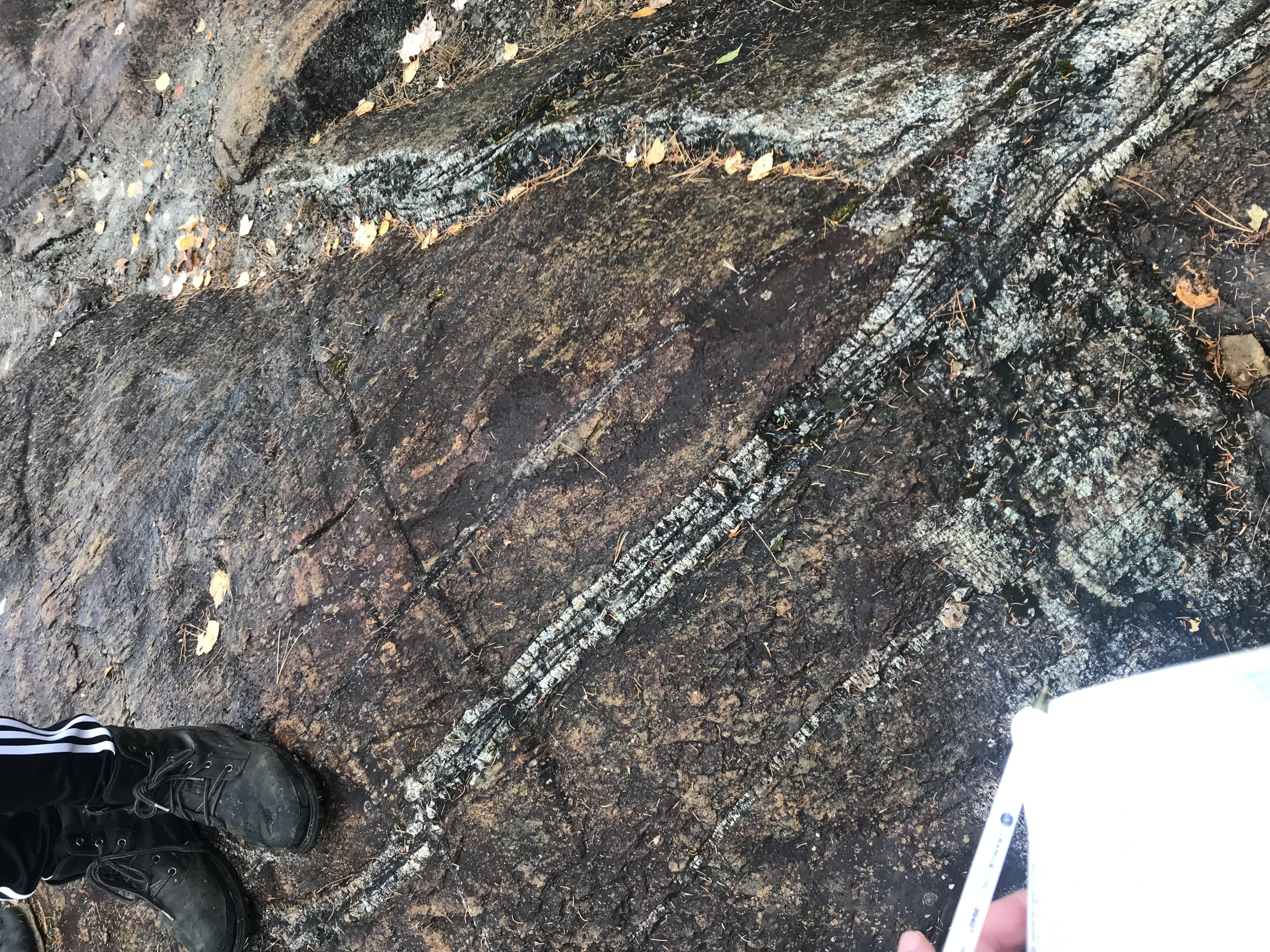
Example of stockwork veins found at the closest to the obducted ophiolite sole 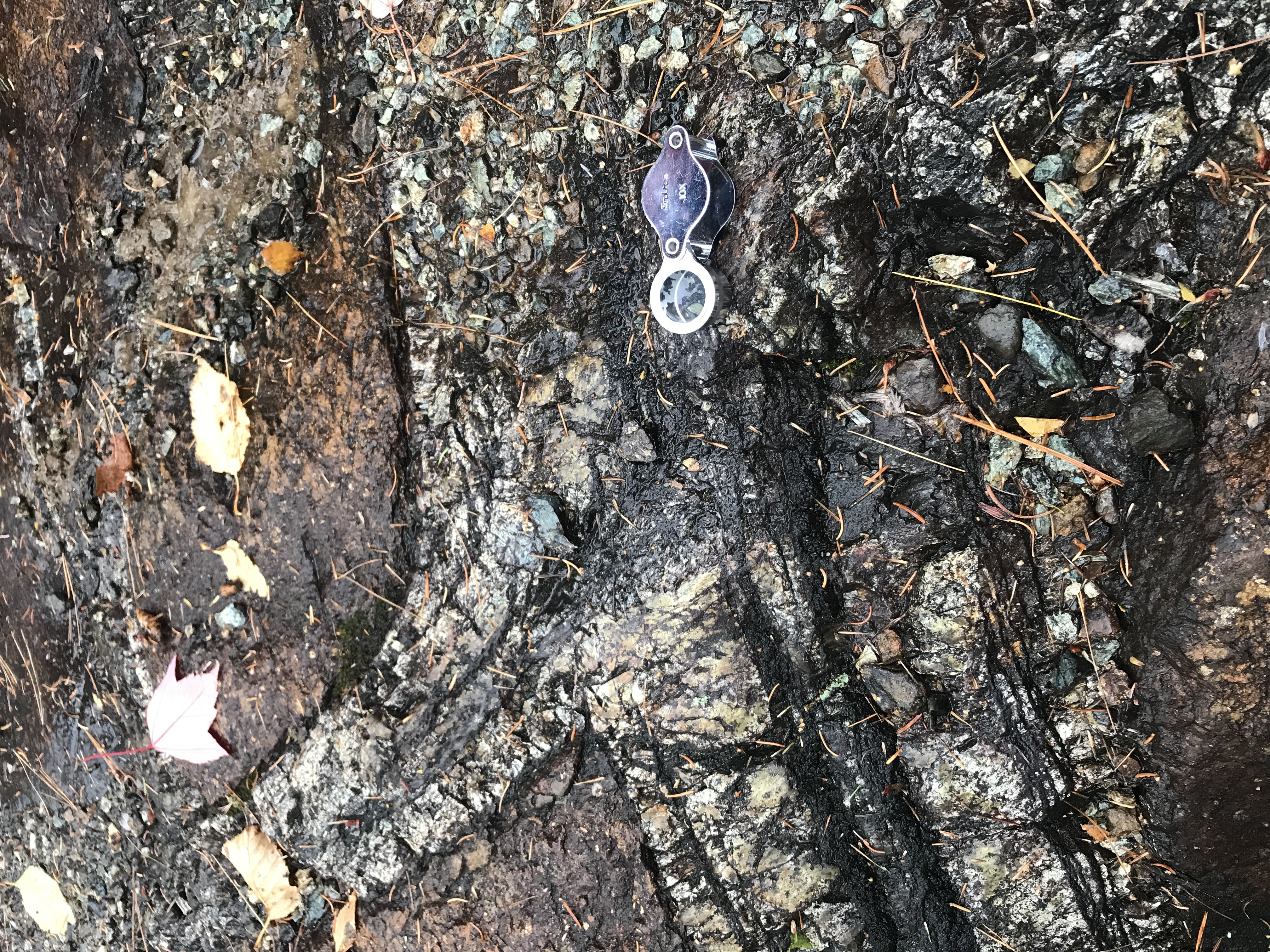
More stock work veins with serpenetinized asbestos
Our last night was spent in a hotel in Thetford where we reviewed for our final exam the next day. On our final day we visited two more outcrops which completed the snippet of geological history we were studying. As a class, we did a brief review station overlooking the St. Lawrence River at La Citadelle de Québec then we were off to see our final two outcrops. After some amazing Boninitic pillow basalts and feeder dykes we headed to the St. Dominique Quarry to see some Lower/Middle Ordovician stratigraphy. The active quarry was a fantastic place to observe an exposed fold as a large scale. After this stop we headed back to the hotel to pack up and head home once we had finished our final exam.
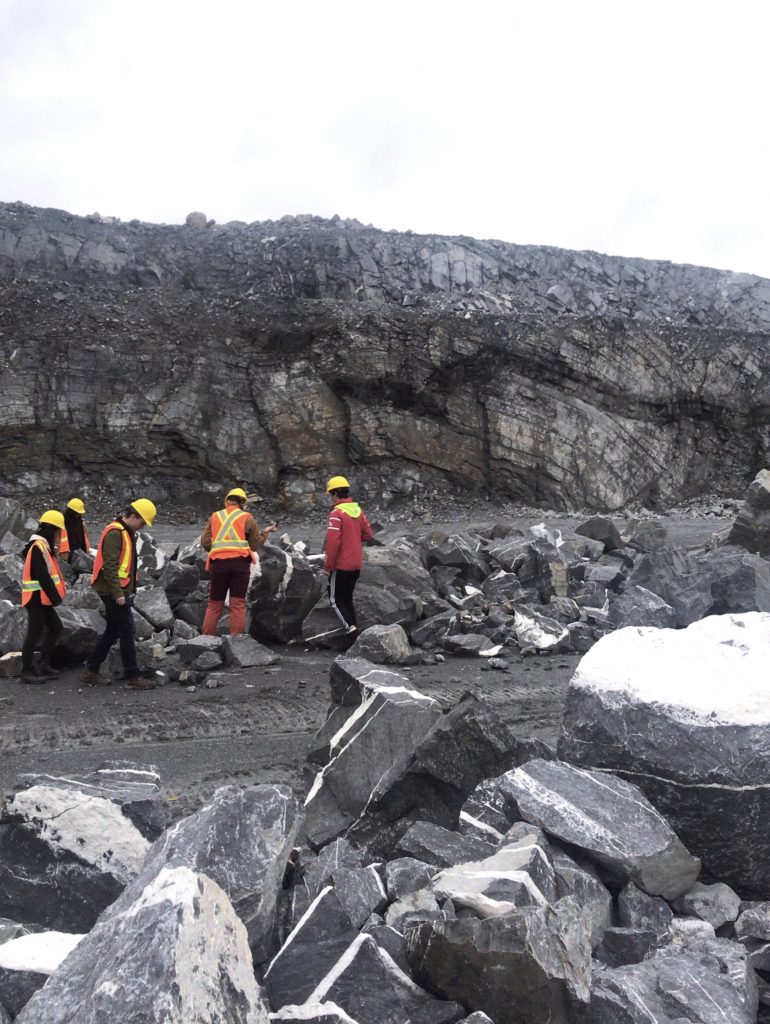
![]() This work is licensed under a Creative Commons Attribution-NonCommercial-ShareAlike 4.0 International License.
This work is licensed under a Creative Commons Attribution-NonCommercial-ShareAlike 4.0 International License.
